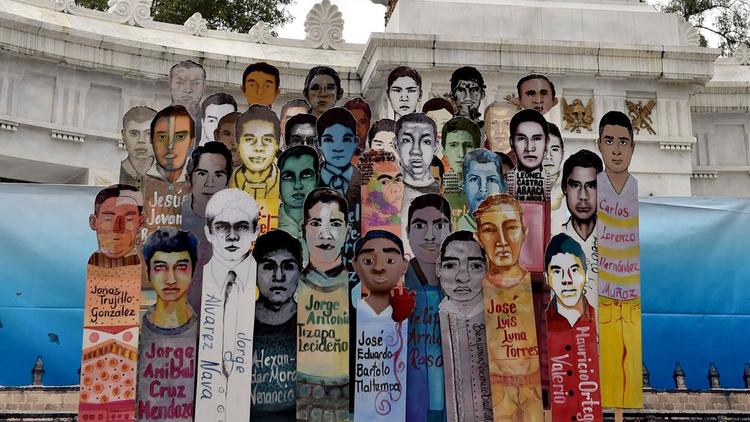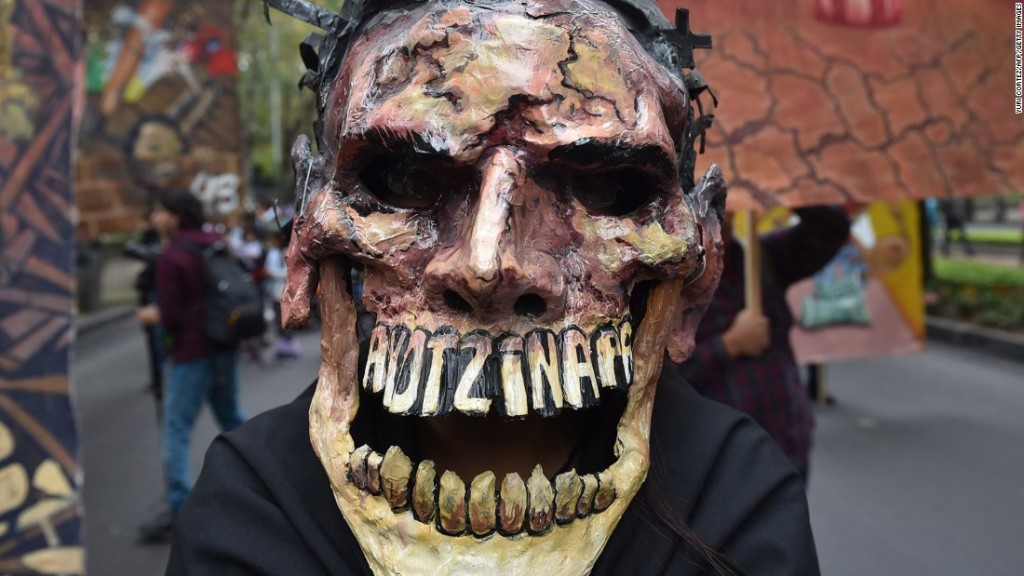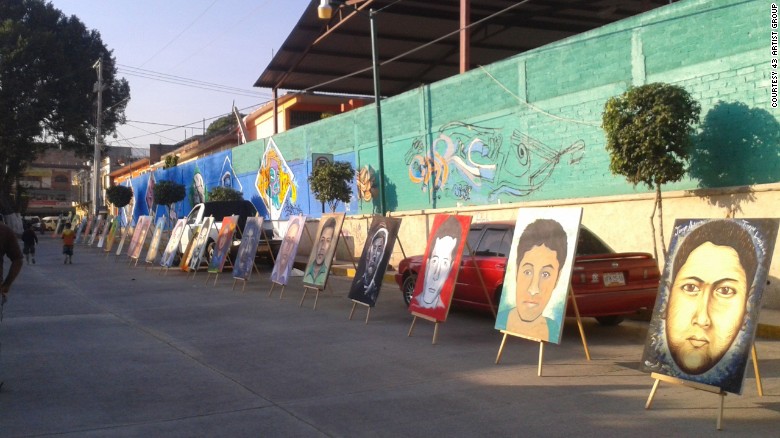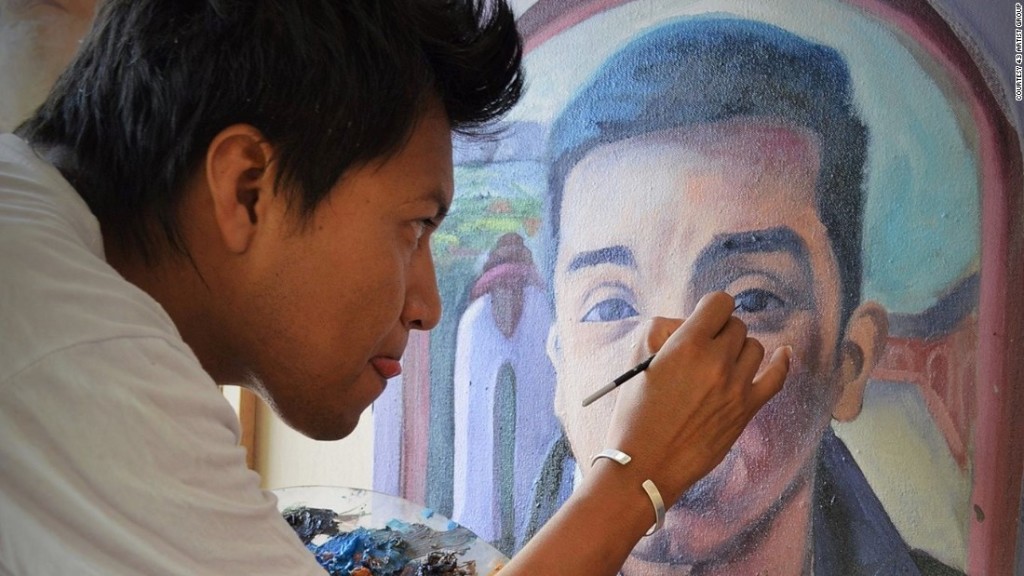A new project from a group of Mexican artists known as the 43 Artist Group is reviving the victims of the Iguala student disappearance by painting and marching in public with their portraits. This comes in a clear rejection of the climate of fear surrounding protests in the wake of the kidnapping.
“We wanted to do something bigger,” group member Joel Amateco Veneacio explains. “What a sign painter, an advertiser, a graphic designer cannot do: draw the faces of the 43.”

Banners of the 43 disappeared students hang in a Mexico City protest last year. The 43 students, training to be teachers, have become symbolic of the ordinary Mexicans plagued by the country’s violence (Yuri Cortez/AFP/Getty Images.)
In an event which has brought worldwide infamy and scrutiny to Mexico’s justice system, 43 students at a teachers’ college went missing from Iguala, Guerrero on September 26, 2014. They were last seen headed to a protest addressing perceived government discrimination in the hiring of teachers. The final communication from the students came when student José Ángel Navarrete Gonzalez called his father, Emilio Navarrete, and said they were being attacked by police.
“I asked him what was happening,” Navarrete said. “Father,” his son said, “we’re being attacked by the police. They already shot my friend. He’s lying on the floor. He was shot in the head.”

The skull mask, a common motif in Mexican folk art, is used in an unusually sinister manner to protest the students’ mysterious disappearance and death (CNN.)
Official authorities claim that the students from the Ayotzinapa Rural Teachers’ College were attacked by local police from Iguala and Cocula, then handed over to a criminal group called the United Warriors who confused them for a rival gang. They were executed, burned in a landfill, and thrown into the San Juan River, according to the head of the Criminal Investigations Agency.
While government officials have suggested that Iguala Mayor José Luis Abarca Velázquez masterminded the attack on the student protestors in working with the local cartel, some investigators have suggested that the Federal Police had at least some role in the kidnappings.
Since the tragic occurrence, there has been much controversy surrounding the Mexican justice system as well as the country’s security forces. Activists worldwide have joined many of the students’ parents in refusing to believe authorities’ take on events, suggesting a large-scale cover-up.

Mexico’s artists refuse the President’s call to move on, demanding that the victims of the student massacre be remembered, and that all guilty parties are brought to justice (CNN.)
An investigation by the Inter-American Human Rights Commission suggested that the official government explanation of the students being executed by the cartel in a landfill is scientifically impossible. More disbelief comes from the fact that only one student has been positively identified while the other 42 cadavers were described as “too badly burned” to obtain DNA samples.
Mexico’s President, Enrique Peña Nieto, stated at a public event in January 2015 that it is time to move on. “I’m convinced that we should not remain trapped in this instant, this moment in Mexico’s history, of sorrow, of tragedy and pain. We just can’t dwell here,” Nieto said. However, Nieto is under fire for what was perceived as a slow reaction to the students’ disappearance and traveling abroad during the protests.
The outrage continues, and The 43 Artist Group intends to keep that alive. Formed in late 2014 in response to the kidnappings, they have protested with paintbrushes over the lack of answers from the Mexican government. In early 2015, they participated in the anniversary protest of the students’ disappearance by creating deathly masks, one of which spelled out “Ayotzinapa”, the city in the Guerrero state where the students were from, some 5 hours south of Mexico City.

A member of the 43 Artist Group is pictured working on the portrait of one of the students killed on their way to a protest. Whether cartels, local government, or federal police are to blame, the artists seek answers and justice (CNN.)
Mexico has a long history of protest art. Numerous protests have taken place since the disappearances, such as last year’s nude protest in Mexico City, in which the artists declared, “It is more shocking to see a naked body in this country than a charred cadaver.” More public art in the country’s capital has criticized the violence plaguing Mexican society.
The reason for the activists’ choice of art for their protest is clear. “Today’s politicians have failed to convince, but art touches the most sensitive parts of us as humans,” said group member Joel Amateco Veneacio. “We have no weapons other than our brushes.”
After the reveal of their latest project, the artists hope to display the painted portraits of the 43 students around Guerrero and eventually internationally.
Their goal? “To go to international and European countries, a tour of those countries to continue the flame with the light of the movement” Veneacio answers.
